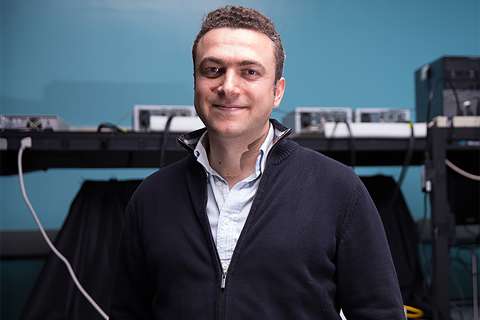New research from UCLA, in collaboration with groups in Toronto, published in European Urology identifies a set of characteristics in tumors that determine if they can be seen by Multiparametric Magnetic Resonance Imaging (MRI). This information could one day be used to help physicians better diagnose and guide treatment options for people with prostate tumors.
MRI has become the standard in detecting tumors non-invasively. Beyond detection, MRI scans also provide insight on how aggressively tumors are growing. With this information, patients and physicians can choose how to more efficiently treat prostate cancer. However, approximately 20 percent of prostate tumors cannot be seen by MRI scans. It is not clear why this subset of tumors are not detectible.
To better understand why some prostate tumors are invisible to MRI, scientists took advantage of a large database and collection of medical data and tissue samples generated at UCLA. From this, the researchers identified 40 prostate tumors for the study. This included 20 tumors that had been detected by MRI and 20 tumors that were not detected by MRI.
“Our aim was to use cutting-edge genomic techniques to look for molecular differences that might help us understand why some prostate tumors are invisible to MRI scans,” said Paul Boutros, director of Cancer Data Science for the UCLA Jonsson Comprehensive Cancer Center. “These features give us a new way to understand which tumors are invisible and how we can work toward making them visible.”
The scientists used machine-learning methods as well as data science to identify a specific set of characteristics of what made prostate tumors visible or invisible to MRI.
"This study provides a biological explanation of why certain tumors are highly visible by MRI and confirms previous studies from our group that such visible tumors are more likely to be biologically aggressive than tumors that are not visualized," said Dr. Robert Reiter, who is director of the UCLA Prostate Cancer Program and a member of the Jonsson Cancer Center.
Funding for the study was provided by the UCLA SPORE In Prostate Cancer, and the National Institutes of Health and National Cancer Institute.
The team members who contributed to this report include: Kathleen Houlahan, Ontario Institute for Cancer Research and the University of Toronto; Julie Livingstone and Vincent Huang, Ontario Institute for Cancer Research; Amirali Salmasi, Taylor Sadun, Aydin Pooli, Ely Felker, Steven Raman, Preeti Ahuja, Anthony Sisk Jr., Robert Reiter, UCLA; Paul Boutros, University of Toronto and UCLA.




